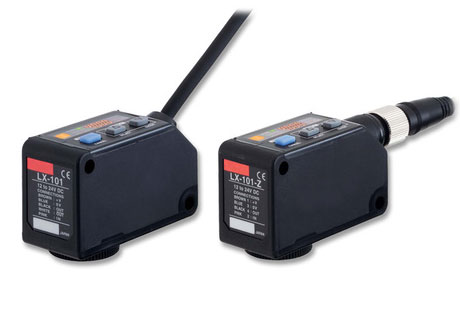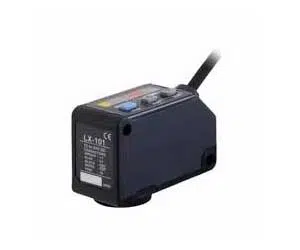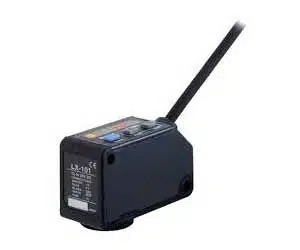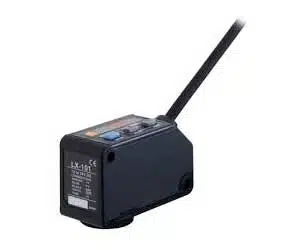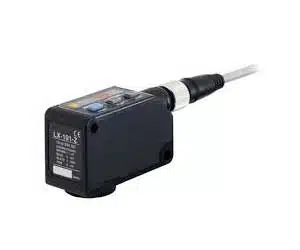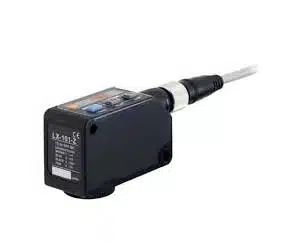Panasonic Color Sensor: Colour Mark Sensors
IndMALL Automation provides a variety of Panasonic Color Sensors. These include Panasonic Colour Mark Sensors, perfect for identifying specific colored marks on items. With the ability to discern colors even in different lighting, our Panasonic Color Sensor ensures accurate detection. These sensors are compact and user-friendly, guaranteeing precision. All these come at budget-friendly prices.
Panasonic Color Sensor: LX-100 Series
The Panasonic Color Sensor excels in color mark detection with an auto LED choice for every application. With its straightforward digital display, adjustments are simple and precise. MODE NAVI aids beginners with effortless sensing status management. Housed in a compact W57 x D24 x H38 mm design, its clear display and numerical threshold adjustments ensure ease. Relying on contrasts over light reflections, it auto-selects from R・G・B LEDs, ensuring a quick 45 μs response.
LX-100 Series
Product List
LX-101
LX-101P
LX-101-P-Z
LX-101-Z
People Also Ask
What is a color sensor and how do they work?
A color sensor is a device that detects and identifies colors. It works by using light to analyze different colors.
When light hits an object, the object reflects some light back. This reflected light has a specific color.
The sensor has a light source, usually an LED, to shine on the object. The object’s color reflects the light in unique ways.
Next, a receiver in the sensor captures the reflected light. The receiver measures the intensity of different colors.
After measuring, the sensor can tell what color the object is. Different colors have different reflection patterns.
In summary, color sensors analyze reflected light to determine an object’s color. They are useful in many applications like sorting and quality control.
What is the function of the color sensor?
A color sensor is a tool that detects colors. Its main job is to identify and recognize different colors.
When an object is placed near the sensor, it shines light on it. The object then reflects this light back to the sensor.
The sensor checks the reflected light’s color. It does this by measuring how much of each color is present.
Then, the sensor can say what color the object is. It uses special patterns to recognize each color.
In daily life, color sensors help in sorting items. They also check the quality of products in factories.
In short, a color sensor’s function is to detect and classify colors accurately. This helps in many industries and tasks.
How accurate is a color sensor?
A color sensor’s accuracy can vary. It depends on the sensor’s design and quality.
High-quality sensors can detect slight color differences. They give very precise color readings.
However, some factors can affect accuracy. These include light conditions and the sensor’s position.
It’s essential to calibrate sensors regularly. Calibration ensures they stay accurate over time.
In conclusion, a color sensor can be very accurate. But it’s vital to use and maintain it correctly.
What are the benefits of color sensors?
Color sensors offer many benefits. They play a vital role in various industries.
Firstly, they ensure product consistency. Companies can match product colors accurately every time.
Secondly, they save time. Manual color checking can be slow. Sensors provide instant results.
Moreover, they reduce waste. Incorrect color matching can lead to rejects. Sensors prevent such mistakes.
Lastly, they are versatile. They work in diverse applications, from manufacturing to agriculture.
In summary, color sensors boost efficiency, accuracy, and versatility in many sectors.
IndMALL Automation: exclusive Panasonic Color Sensor Solutions

